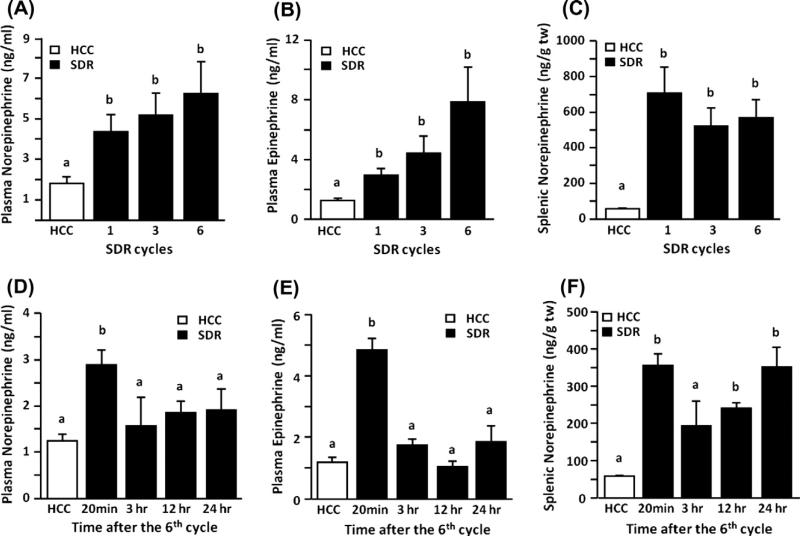Fig. 1.
Repeated social defeat significantly increased plasma and splenic catecholamines. Separate groups of mice were subjected to one, three or six cycles of repeated social defeat (SDR; filled bars) or left undisturbed in their home cage (HCC; open bars). Immediately following the first, third or sixth stress cycle plasma and spleens were collected to determine catecholamine levels. Mice subjected to SDR had increased levels of (A) plasma norepinephrine and (B) plasma epinephrine as well as (C) increased splenic norepinephrine regardless of the number of SDR cycles experienced. In a follow up study separate groups of mice were subjected to six cycles of SDR in order to collect plasma and spleens at 20 min, 3, 12 or 24 h post termination of the stressor in order to assess catecholamine levels. (D and E) Plasma norepinephrine and epinephrine were elevated 20 min following termination of the stressor but returned to control levels at later time points. (F) Defeated mice had elevated splenic norepinephrine except at 3 h post termination of the stressor. Bars represent the mean ± SEM (n = 6). Means with different letters (a or b) are significantly different (p < 0.05) from each other. (tw = total tissue weight).

